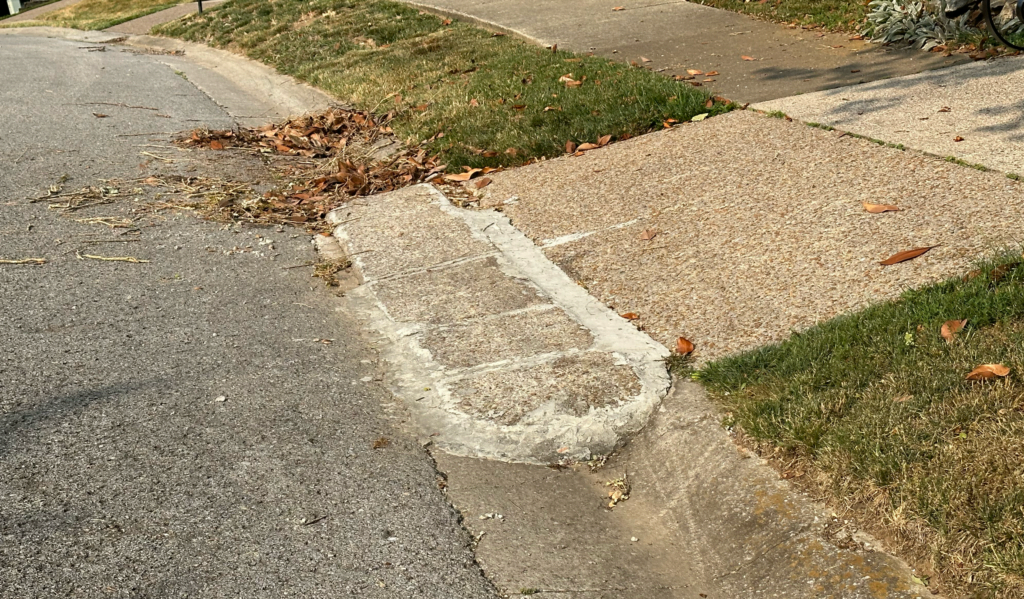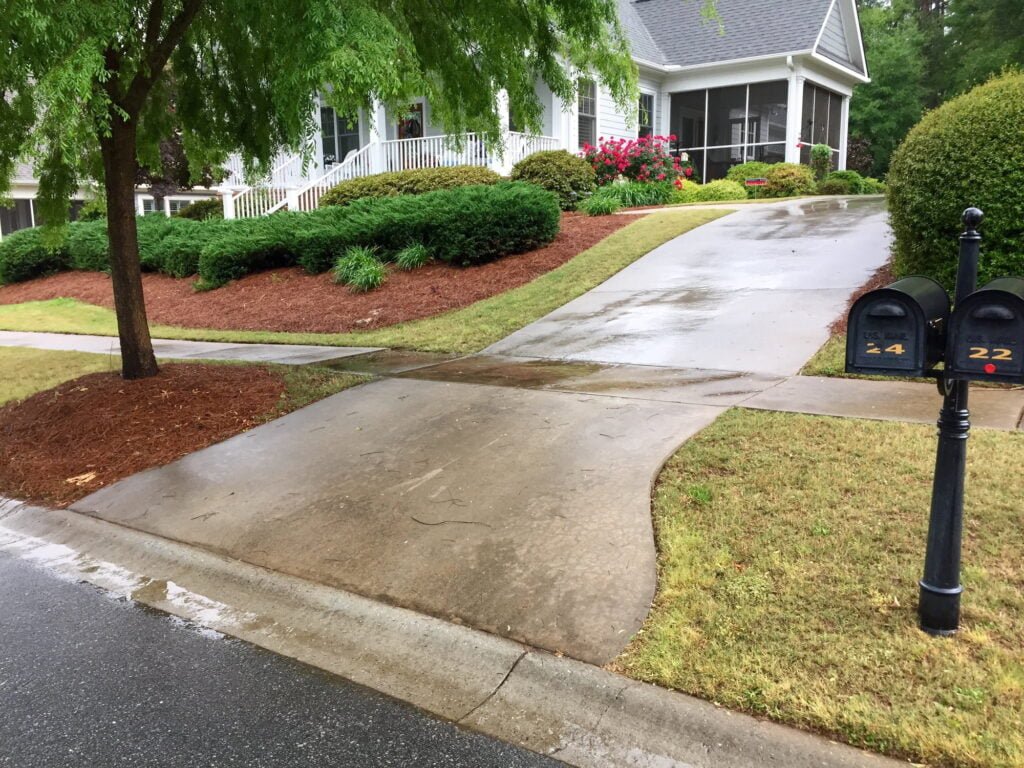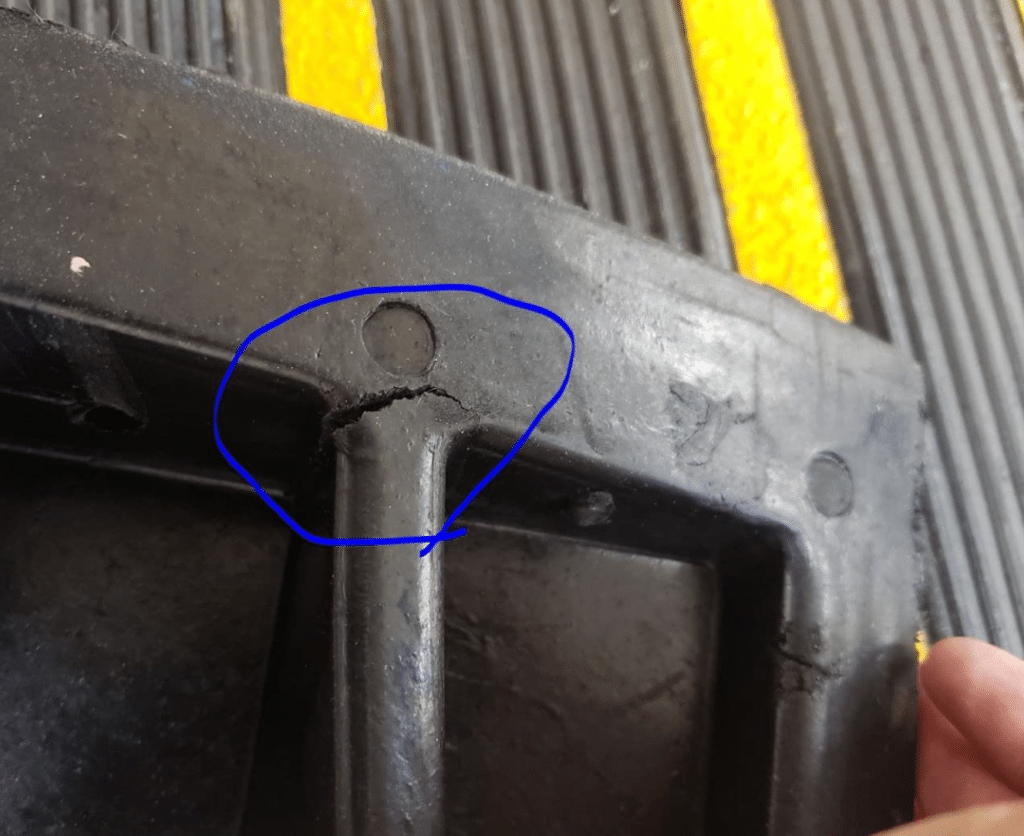Do you feel like you’re scaling a mountain every time you pull into your driveway? Steep driveways can be a challenge, but they also present exciting opportunities to enhance the beauty and functionality of your property. In this blog post, we’ll explore various before and after steep driveway solutions that can help you find the perfect fit for your unique situation. From gravel and sand application to curb ramps, we’ll delve into the world of driveway transformations to help you conquer that steep incline with ease.
Get ready to revamp your driveway and make it safer and more accessible for you and your vehicles. By understanding the causes and challenges of steep driveways, and considering both short-term and long-term before and after steep driveway solutions, you’ll be well-equipped to select the best option for your specific needs. So, buckle up and let’s begin our journey toward a smoother, safer driveway experience!
Table of Contents
Key Takeaways
Explore solutions to safely and effectively manage steep driveways, from gravel application to curb ramps.
Invest in long-term improvements such as resurfacing with resin and regrading the driveway for enhanced safety, functionality & visual appeal.
Get inspired by real life case studies that showcase successful transformations with improved safety & accessibility!
Understanding Steep Driveways: Causes and Challenges
Steep driveways can result from the natural terrain of the land, the grade of the driveway, or the angle of the steep incline. They can be both a challenge and a reward, as maintaining a very steep driveway can help improve the safety and accessibility for you, your car, and even pedestrians. However, securing an appropriate solution for your steep driveway is vital for maintaining safety and facilitating ease of use.
Ideally, the angle of the slope should not exceed 12% or 15%. Sloping at a steeper angle would be too difficult to manage. If your driveway is steeper than this, you may need to consider a solution, such as:
Regrading the driveway to reduce the slope
Adding a curb ramp to make it easier to transition onto the driveway
By implementing these solutions, you can ensure that your steep driveway is safe and manageable for everyone who uses it.
To find the best solution for your steep driveway, it’s essential first to assess its steepness and consider various factors, such as traction, durability, and ease of maintenance. By understanding the unique challenges of your steep driveway, you can make an informed decision about the best solution to tackle the issues and improve the overall functionality and safety of your property.
Assessing Your Driveway’s Steepness
Evaluating the steepness of your driveway is a key factor in identifying the most effective solution to prevent issues like car scraping, slipping tires, and even accidents. Ideally, the driveway slope grade should be below 12% for the best performance. If your driveway is paved and has a steep slope, you may need to consider additional solutions to improve safety and accessibility, such as adding curves or filling in dips or hollows at the base of the driveway.
When assessing your driveway, consider factors like traction, durability, and maintenance requirements. For instance, adding gravel to your existing driveway can provide extra traction and prevent slipping. For dips or hollows at the base of your driveway, filling them in with compacted gravel and sand can create a smoother transition and ensure the longevity of your driveway, especially in heavy vehicle traffic areas.
Before: Identifying Potential Solutions
Another option to consider is speed bumps and safety barriers, which can help control vehicle speed and prevent accidents on steep driveways. These solutions can be particularly helpful to manage the risks associated with steep driveways, but proper installation and maintenance are crucial to ensure their effectiveness and longevity.
Taking all the available options into account, you can arrive at a well-informed decision about the most fitting solution for your unique requirements.
Gravel and Sand Application
Applying gravel and sand to your steep driveway can significantly improve traction and make it safer for vehicles to navigate, especially in wet or slippery conditions. This can be a cost-effective solution for homeowners who are comfortable with a more utilitarian look for their driveway and don’t mind performing regular maintenance. However, keep in mind that gravel may gradually shift down the slope over time, necessitating the need for regular replenishment.
Although gravel and sand application may not be the most visually appealing solution, it can be highly effective in improving the safety and functionality of your steep driveway, particularly in slippery conditions. If you’re looking for a budget-friendly option that can help you tackle the challenges of a steep driveway without breaking the bank, gravel and sand application might be the perfect solution for you.
Speed Bumps and Safety Barriers
Speed bumps and safety barriers are another option to consider for managing steep driveways. These solutions can help reduce vehicle speed and provide a tangible barrier to keep vehicles from going too fast. Installing speed bumps and safety barriers can be a straightforward and effective way to improve the safety of your driveway, particularly if you have heavy vehicle traffic or steep inclines.
When selecting speed bumps and safety barriers, it’s essential to consider the following factors:
Choose durable, high-quality materials that can withstand the elements and provide reliable protection for your vehicles.
Ensure proper installation to maximize effectiveness and longevity.
Regular maintenance is crucial to keep the speed bumps and safety barriers in good condition and functioning properly.
By considering these factors, you can ensure that your chosen speed bumps and safety barriers will effectively serve their purpose and provide long-lasting protection.
Incorporating speed bumps and safety barriers can foster a safer environment for both motorists and pedestrians, aiding in the prevention of accidents on your steep driveway. However, it’s essential to ensure compliance with local building codes while implementing these safety measures.
After: Implementing Long-Term Solutions

Once you’ve explored potential short-term solutions, it’s time to consider long-term options that can provide lasting improvements to your steep driveway’s safety and functionality. Driveway resurfacing with resin and regrading and redesigning the driveway are both excellent long-term solutions that can help make your driveway more user-friendly and less steep. These options can provide significant benefits to your property, such as improved drainage, reduced risk of flooding, and increased accessibility.
Investing in enduring solutions like resin resurfacing or regrading and redesigning your driveway guarantees not only the safety and lifespan of your property but also augments its visual appeal. These solutions may require a more significant upfront investment, but the long-term benefits and improved functionality of your steep driveway make them well worth considering.
Regrading and Redesigning the Driveway
Regrading and redesigning your driveway can help reduce its steepness and improve safety for both vehicles and pedestrians. This process involves adding or removing material to create a more gradual slope, making the driveway more accessible and less steep. While this option may require professional assistance and a more significant investment, the benefits of a safer, more functional driveway make it an excellent long-term solution.
Regrading and redesigning your driveway offers several benefits:
Enhances the aesthetic and functionality of your driveway
Makes it more navigable for vehicles and pedestrians
Improves drainage and reduces the risk of flooding
Increases the safety and usability of your steep driveway
Although it may require a more significant upfront investment, the long-term advantages make it a worthwhile option for homeowners.
Curb Ramps: A Customizable Solution

Curb ramps, including premade ramp options, are an effective and customizable solution for steep driveways, preventing car scraping and providing a smooth transition from the street to the driveway. These ramps can be tailored to the specific requirements of your driveway, ensuring a secure and convenient solution for navigating steep inclines.
In addition, curb ramps offer several advantages:
They are a cost-effective solution compared to pre-made ramps.
They can be quickly installed, saving time and effort.
They improve safety and accessibility for homeowners.
These benefits make curb ramps an attractive option for homeowners looking to improve their driveway’s safety and accessibility.
When selecting a curb ramp, it’s essential to consider factors such as:
Durability
Quality
Design
Affordability
Safety
These factors ensure the best possible outcome for your driveway. Appropriate installation and upkeep are pivotal to ensure the effectiveness and lifespan of your curb ramp, offering a durable solution that safeguards your vehicle and enhances your steep driveway’s overall safety.
Selecting the Right Curb Ramp
Selecting the right curb ramp for your steep driveway involves considering factors such as:
Durability
Quality
Design
Affordability
Safety
Evaluating these elements and comparing different ramp options enables you to make a knowledgeable choice about the most suitable curb ramp for your particular needs. In addition, it’s essential to ensure proper installation and maintenance to maximize the effectiveness and longevity of your chosen curb ramp.
When researching curb ramp options, look for ramps that have the following features:
Made from durable materials that can withstand the elements
Provide reliable protection for your vehicle
Slip-resistant surfaces to ensure safety
Integrated cut-out holes for easy installation By selecting a curb ramp with these features, you can enjoy a smoother, safer driving experience and protect your car from potential damage caused by steep driveways.
Installation and Maintenance
Proper installation and maintenance of curb ramps are essential to ensure their effectiveness and longevity in protecting your vehicle and improving the safety of your steep driveway. To install a curb ramp, follow these steps:
Carefully read and follow the manufacturer’s installation instructions.
Make sure the ramp is securely anchored in place.
If you’re unsure about the installation process, consider hiring a professional to ensure a safe and secure installation.
Regular maintenance is also crucial for the long-term performance of your curb ramp. Inspect the ramp routinely for signs of wear and tear, repairing or replacing any damaged components as needed. Additionally, check the surface of the ramp for debris or dirt that could pose a slip hazard and clean it as necessary.
With minimal maintenance and correct installation, you can fully leverage the advantages of your curb ramp, resulting in a safer, smooth ride for a smoother driveway experience.
Case Studies: Real-Life Steep Driveway Transformations
We have discovered some inspiring real-life examples of steep driveway transformations that showcase the effectiveness of various solutions, from gravel application to curb ramps. These real-life experiences demonstrate the practical benefits of implementing driveway solutions and the impact they can have on improving the safety and accessibility of steep driveways.
As we explore these case studies, you’ll see that curb ramps have proved to be the most popular choice for managing steep driveways. Examining real-life transformations of steep driveways provides valuable insights into the practical benefits of various solutions and their impact on enhancing driveway safety and accessibility.
Whether you’re considering gravel, resin, or curb ramps, these real-life examples can help you make an informed decision about the best steep driveway solution for your specific needs.
Gravel Driveway Transformation
In one case study, a homeowner transformed their steep driveway into a flat driveway by adding more gravel to improve traction and safety for vehicles. By selecting the right type of gravel, such as angular gravel about ¾–2 inches in length, the homeowner was able to create a stunning driveway transformation that not only improved safety but also enhanced the appearance of their property.
This real-life example demonstrates the benefits of transforming a gravel driveway, including improved traction, better drainage, and a more attractive property. By following the proper steps for a gravel driveway transformation, such as measuring the area, preparing the base, laying the gravel, and compacting it, you too can enjoy the benefits of a safer and more visually appealing driveway.
Curb Ramp Solution Proves to Be the Most Popular
Curb ramps have emerged as the most popular solution for steep driveway transformations in our case studies. These ramps are designed to provide a smooth transition between the street and the driveway, preventing car scraping and improving safety. Homeowners who have installed curb ramps have found them to be a cost-effective and customizable solution that can be easily installed and maintained.
In these real-life examples, curb ramps have proven to be an effective and popular choice for managing steep driveways. Choosing the right curb ramp and ensuring its proper installation and maintenance enables homeowners to enjoy a safer, more accessible driveway, thereby safeguarding their vehicles and enhancing the overall safety of their property.
Summary
Throughout this blog post, we have explored various steep driveway solutions that cater to different needs and preferences. From gravel and sand application for improved traction to long-term solutions like resin resurfacing and regrading, there is a solution for every homeowner looking to improve the safety and accessibility of their steep driveway. Curb ramps have proven to be the most popular choice, offering a customizable and cost-effective solution that can make a significant impact on the safety and functionality of your driveway.
As you consider the best solution for your steep driveway, remember to assess your driveway’s steepness, explore potential short-term and long-term solutions, and weigh the pros and cons of each option. By taking the time to understand the unique challenges of your steep driveway and considering all available options, you can make an informed decision that will improve the safety and accessibility of your property for years to come.
Frequently Asked Questions
What do I do if my driveway is too steep?
If your driveway is too steep, regrading is the most effective solution, though it may be expensive depending on the angle and slope. Alternatively, you could also try gravel, resin, adding speed bumps, curving the driveway, or installing a rubber ramp.
What is the best product for a steep driveway?
The most effective solution for steep driveways is the installation of a driveway curb ramp. This option outperforms other materials such as brick, concrete, rubber pavers, or recycled plastic pavers in terms of overall suitability for steep driveways.
How do you go up a steep driveway without scraping it?
Avoid scraping your driveway by starting perpendicular and not coming in straight on. Then, turn your front wheels all the way to the right when they are past the driveway entry. A rubber curb ramp or a custom-built ramp are also good solutions for avoiding scraping your steep driveway.
What is the ideal angle of slope for a driveway?
For the safest and most efficient driveway, aim for an angle of slope that is no steeper than 12% or 15%.
How can I assess my driveway’s steepness?
Assess your driveway’s steepness by considering factors such as traction, durability, and maintenance needs. This will help you determine the best solution for your specific situation.


